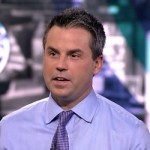The battle between business news pontificaters across the 4th estate is in full season, as evidenced by a smart article yesterday by Bloomberg LP’s Eric Balchunas and suggests that MarketsMuse curators are apparently not the only topic experts who noticed and took aim at a recent WSJ article that proclaimed savvy hedge fund types are increasingly exploiting exchange-traded funds by arbitraging price anomalies between the underlying constituents and the ETF cash product that occur in volatile moments.
That original WSJ article, “Traders Seek Ways to benefit from ETF woes …At the Expense of Investors” was misleading, and as noted by MarketsMuse Sept 30 op-ed reply to the WSJ piece, one long time ETF expert asserted that WSJ’s conclusions was “much ado about nothing.” Bloomberg’s Balchunas has since reached a similar conclusion; below are extracted observations from his Oct 12 column..
Hedge funds may need to get back to the drawing board if they’re planning to turn around their performance struggles by capitalizing on “shortcomings in the ETFs’ structure” via some unusual trade ideas, as highlighted in this recent Wall Street Journal article. Most funds do nothing of the sort.

The vast majority of ETF usage by hedge funds is very boring. They love to short ETFs to get their hedge on and isolate some kind of risk. For example, they may short the Health Care Select Sector SPDR ETF (XLV) and then make a bet on one of the health-care stocks in the basket in order to quarantine a single security bet. Hedge funds have about $116 billion worth of ETF shares shorted, compared with only $34 billion in long positions, according to data compiled by Goldman Sachs last year.
The $34 billion in long positions is them using ETFs like everyone else — as a way to get quick and convenient exposure to a particular market. For example, the world’s largest hedge fund, Bridgewater Associates, has a $4 billion position in the Vanguard FTSE Emerging Markets ETF (VWO), which it has held for six years now. There’s also Paulson & Co.’s famous $1 billion position in SPDR Gold Trust (GLD), which it has been holding for almost seven years. Like anyone else, they like the cheap exposure and liquidity VWO and GLD serve up.
With that context in place, yes, there are a tiny minority of hedge funds that engage in some complex trades like the ones highlighted in the article. But each trade comes with at least one big problem.
Before anyone tries any of these at home, it’s important to deconstruct them.
Trade #1: Robbing Grandma
How it works: During a major selloff, try and scoop up shares at discounted prices put in by small investors using market orders.
The problem: It’s super rare. Aug. 24, which saw hundreds of ETFs trade at sharp discounts amid a major selloff, was basically an anomaly. At best, a day like that happens once every two years. Thus, to capitalize on discounts of the 20-30 percent variety is like standing on a beach waiting for a hurricane to hit. And you won’t be the only one, so you may wait two years only to find you can’t get your order filled on the day the big one hits. In addition, no large institutional investors are putting in market orders. So this low-hanging fruit is sell orders for tiny amounts put in by unknowing small investors. Essentially this is the white-collar equivalent of robbing Grandma for some loose change in her purse.
Moreover, Aug. 24 may never happen again, at least the way it unfolded. ETF issuers are working with the exchanges, the regulators, and the market makers — and even making significant recommendations — to make sure those kinds of small investors aren’t exposed again like that.
It should be noted, though, that arbitrage between the ETF price and the value of the holdings happens day in and day out with ETFs — that’s how ETFs work. They rely on a network of market makers and authorized participants to arbitrage away the discrepancy between the ETF’s underlyings and its net asset value (NAV).
Trade #2: The Double Short
To continue reading the straight scoop from Bloomberg columnist Eric Balchunas, click here



